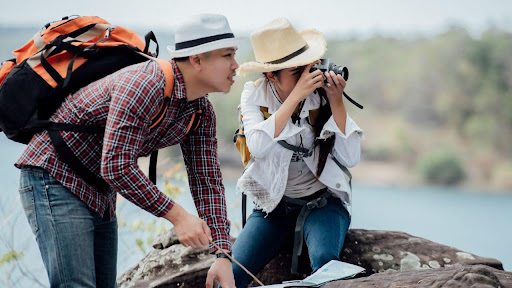Contents
Are you someone who loves to go on photography trips? If yes, Picture this: Going on a photography trip exploring wildlife’s captivating and adventurous life just like you have seen or read in magazines.
From Icelandic birds to Kenyan wildlife, you want to capture all the beauty with the grace of wildlife, which requires patience, skills, and a keen eye for detail.
However, in all the excitement, you may encounter different challenges that can test your creativity. More wildlife photography trips sound interesting, and risks are more likely.
If you are new to the field of photography, then worry not because here we’ll tell you about the challenges you may face.
Challenges:
Unpredictable Weather:
Weather plays a significant role in wildlife photography, affecting the behaviour of animals and the lighting conditions for capturing images. While sunny days can provide excellent lighting for photography, they may also result in harsh shadows and overexposure. On the other hand, cloudy or rainy weather can create diffused light, enhancing colours and reducing glare, but it may also pose challenges regarding visibility and equipment protection.
Tip: Be prepared for all types of weather by packing essential gear such as waterproof camera covers, lens hoods, and protective clothing. Additionally, embrace the unique opportunities that different weather conditions present, such as capturing dramatic skies or intimate moments between animals seeking shelter from the rain.
Finding and Approaching Wildlife:
Locating wildlife subjects can be daunting, especially in vast and remote wilderness areas where animals roam freely. Even when you spot a potential subject, approaching them without disturbing their natural behavior can be challenging. Animals are often wary of human presence and may flee or become aggressive if they feel threatened.
Tip: Practice patience and observation skills to increase your chances of encountering wildlife. Research your target species’ behaviour patterns and habitats beforehand to anticipate their movements. Use long lenses and camouflage techniques to maintain a safe distance and minimize disturbance. Above all, respect the animals’ space and behaviour, prioritizing their welfare over getting the perfect shot.
Lighting Conditions:
Lighting is the cornerstone of photography, and capturing compelling wildlife images requires careful consideration of natural light sources. Harsh midday sunlight can create harsh shadows and washed-out colours, while golden hour lighting during sunrise and sunset offers soft, warm hues and captivating textures. However, wildlife photographers often have limited control over lighting conditions, especially when shooting in remote or unpredictable environments.
Tip: Make the most of available light by planning your shoots around sunrise and sunset when the light is most favourable. Experiment with different angles and perspectives to take advantage of natural light patterns and create dynamic compositions. Consider using fill flash or reflectors to illuminate your subjects and balance exposure in challenging lighting situations.
Equipment Limitations:
Wildlife photography tours require specialized gear to effectively capture distant subjects and fast-moving action. However, carrying bulky equipment over long distances or rugged terrain can be physically demanding, limiting mobility and flexibility. Moreover, technical issues such as battery drain, memory card errors, or equipment malfunctions can disrupt your shooting workflow and cause missed opportunities.
Tip: Prioritize portability and versatility when selecting your photography gear for wildlife trips. Invest in lightweight yet durable camera bodies and lenses with long focal lengths to reach distant subjects. Pack extra batteries, memory cards, and cleaning supplies to avoid unexpectedly running out of power or storage space. Practice using your equipment in various conditions to familiarize yourself with its capabilities and troubleshoot any issues quickly.
Environmental Hazards:
Bird photography tours, along with other wildlife trips, often take photographers into remote and challenging environments where they may encounter various hazards and risks. From extreme weather and rugged terrain to encounters with dangerous animals or insects, photographers must be prepared to mitigate potential dangers and prioritize their safety at all times.
Tip: Conduct thorough research and risk assessments before embarking on bird photography tours to identify potential hazards and plan accordingly. Pack essential safety gear such as first aid kits, navigation tools, and emergency communication devices. Familiarize yourself with local regulations and guidelines for wildlife encounters, and always follow best practices for ethical and responsible photography in natural settings.
Conclusion:
Wildlife photography trips offer unparalleled opportunities and challenges. Understanding weather, wildlife approach, lighting, equipment, and environmental hazards enhances success. Patience, perseverance, and respect for nature turn each trip into a rewarding adventure filled with unforgettable moments and extraordinary encounters, inspiring and educating audiences worldwide.



